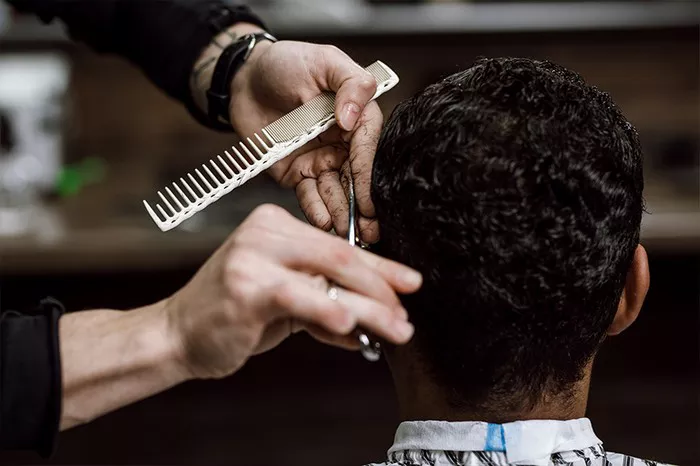For many people, the desire for long, luscious locks often leads to the question: “Does cutting my hair make it grow faster?” This common belief suggests that regular trims can somehow accelerate hair growth, but is there any truth to this notion? In this article, we’ll explore the science behind hair growth, examine the factors that influence it, and determine whether cutting hair really impacts its growth rate.
Understanding Hair Growth
The Hair Growth Cycle
Before diving into the myth of hair cutting and growth, it’s essential to understand how hair grows. Hair growth occurs in cycles that consist of three primary phases:
Anagen Phase (Growth Phase): This is the active growth phase where hair follicles produce new hair. The anagen phase can last anywhere from two to seven years, with the average growth rate being about half an inch (1.25 cm) per month.
Catagen Phase (Transition Phase): Following the anagen phase, hair enters a transitional phase lasting about two to three weeks. During this time, hair follicles shrink, and hair detaches from the blood supply.
Telogen Phase (Resting Phase): This phase lasts for about three to four months. Hair rests and eventually falls out, making way for new hair to grow as the cycle restarts.
Factors Influencing Hair Growth Rate
Hair growth is influenced by a variety of factors, including:
Genetics: Your genetic makeup plays a significant role in determining your hair growth rate, thickness, and overall health.
Age: Hair growth tends to slow down with age due to hormonal changes and a reduction in the duration of the anagen phase.
Health and Nutrition: A well-balanced diet rich in vitamins and minerals is essential for optimal hair health. Deficiencies can lead to slower growth or hair loss.
Hormonal Factors: Hormonal fluctuations, such as those during pregnancy, menopause, or due to medical conditions, can impact hair growth.
See Also: Does Cutting Hair Short Make It Grow Thicker? Learn the truth
The Myth of Cutting Hair for Faster Growth
The Origin of the Myth
The belief that cutting hair makes it grow faster likely stems from the desire to maintain healthy hair. Regular trims can help eliminate split ends and prevent hair breakage, leading to the appearance of healthier, thicker hair. However, this does not directly affect the growth rate of hair at the follicle level.
What Cutting Hair Actually Does
When you cut your hair, you are trimming the hair that is already visible above the scalp. Here’s what happens when you cut your hair:
Prevention of Split Ends: Regular trims help remove damaged ends, which can prevent further splitting and breakage. This can result in healthier-looking hair but does not influence growth.
Improved Appearance: Freshly cut hair often looks fuller and healthier because the damaged ends are removed. This can create an illusion of faster growth since the hair appears more vibrant.
No Effect on Follicles: Hair growth occurs at the follicle level, beneath the scalp. Cutting hair does not stimulate the follicles or influence the growth cycle in any way.
Scientific Evidence
Numerous studies and hair experts confirm that cutting hair does not affect the rate of hair growth. The American Academy of Dermatology states that while regular trims can improve the hair’s appearance, they do not impact how quickly hair grows. Similarly, dermatologists emphasize that hair growth is determined by biological factors rather than cutting.
Factors That Can Promote Hair Growth
While cutting hair does not speed up growth, there are several practices that can help promote healthier hair growth:
Regular Trims
Although trimming doesn’t accelerate growth, it can keep hair healthy by removing split ends and preventing breakage. Aim for a trim every six to eight weeks for optimal hair health.
Proper Nutrition
A balanced diet plays a crucial role in hair health. Ensure you consume enough:
Proteins: Hair is made of keratin, a protein. Include lean meats, fish, eggs, beans, and nuts in your diet.
Vitamins: Essential vitamins, particularly B vitamins (like biotin), vitamin D, and vitamin E, are vital for hair growth.
Minerals: Iron, zinc, and selenium contribute to healthy hair follicles.
Scalp Care
A healthy scalp is essential for hair growth. Consider the following tips:
Regular Cleansing: Keep the scalp clean to prevent build-up that can clog hair follicles.
Exfoliation: Gentle scalp exfoliation can promote blood circulation and help remove dead skin cells.
Stress Management
High-stress levels can lead to hair loss. Incorporate stress-reducing activities such as yoga, meditation, and exercise into your routine.
Hydration
Drinking plenty of water helps keep your hair and scalp hydrated, promoting a healthy environment for hair growth.
Hair Care Products
Choose hair care products that suit your hair type and avoid those containing harsh chemicals. Regularly using a nourishing conditioner can also help maintain healthy hair.
Conclusion: The Real Key to Healthy Hair Growth
In conclusion, the idea that cutting your hair makes it grow faster is a myth. While regular trims are essential for maintaining healthy-looking hair by preventing split ends and breakage, they do not influence the growth rate at the follicle level.
To promote hair growth effectively, focus on a balanced diet, proper scalp care, stress management, and regular trims. Embrace the natural growth cycle of your hair, and remember that patience is key when aiming for long, beautiful locks. By understanding the true factors that influence hair growth, you can take proactive steps toward achieving your hair goals.
You Might Be Interested In
- Does Hair Growth Stop at a Certain Age? Debunking Myths
- Sleeping with Hair Up: Pros & Cons of Hair Care During Sleep
- Does Your Hair Get Greasy If You Wash It Every Day?


